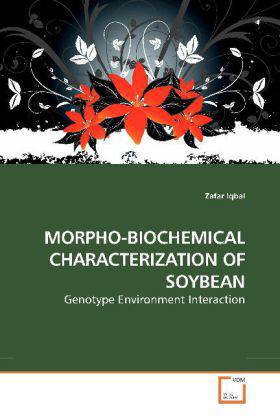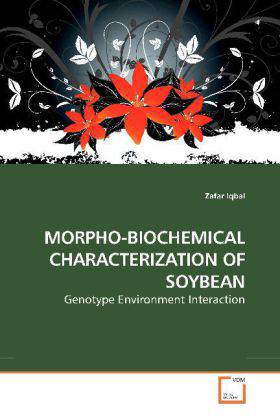
- Afhalen na 1 uur in een winkel met voorraad
- Gratis thuislevering in België vanaf € 30
- Ruim aanbod met 7 miljoen producten
- Afhalen na 1 uur in een winkel met voorraad
- Gratis thuislevering in België vanaf € 30
- Ruim aanbod met 7 miljoen producten
Zoeken
MORPHO-BIOCHEMICAL CHARACTERIZATION OF SOYBEAN
Genotype Environment Interaction
Zafar Iqbal
Paperback | Engels
€ 77,95
+ 155 punten
Omschrijving
Soybeans [Glycine max (L.) Merrill] is one of the important protein and world leading oilseed crop. It supplies approximately 65 and 25 % of the world s protein and edible oils respectively. Pakistan is chronically deficit in edible oils, so it is an ample need to find new resource to overcome the shortage. In Pakistan, soybean is cultivated on a very small area due to non availability of high yielding and area-specific adaptable varieties. The present study was conducted to collect germplasm and evaluate the genetic variability and genotype environment interaction to identify the promising and adaptable varieties. Significant genetic variation among genotypes was observed in agronomic traits. Genotype x environment interaction was significant among genotypes and across the locations. The interaction between genotype and location showed significant and non non-significant differences in years. Genotype, location, year and interactions of them showed significant variability. The present study would be informative for adaptability of genotypes and desirable traits could be exploited for crop improvement and developing new varieties.
Specificaties
Betrokkenen
- Auteur(s):
- Uitgeverij:
Inhoud
- Aantal bladzijden:
- 216
- Taal:
- Engels
Eigenschappen
- Productcode (EAN):
- 9783639200102
- Uitvoering:
- Paperback
- Afmetingen:
- 220

Alleen bij Standaard Boekhandel
+ 155 punten op je klantenkaart van Standaard Boekhandel
Beoordelingen
We publiceren alleen reviews die voldoen aan de voorwaarden voor reviews. Bekijk onze voorwaarden voor reviews.








